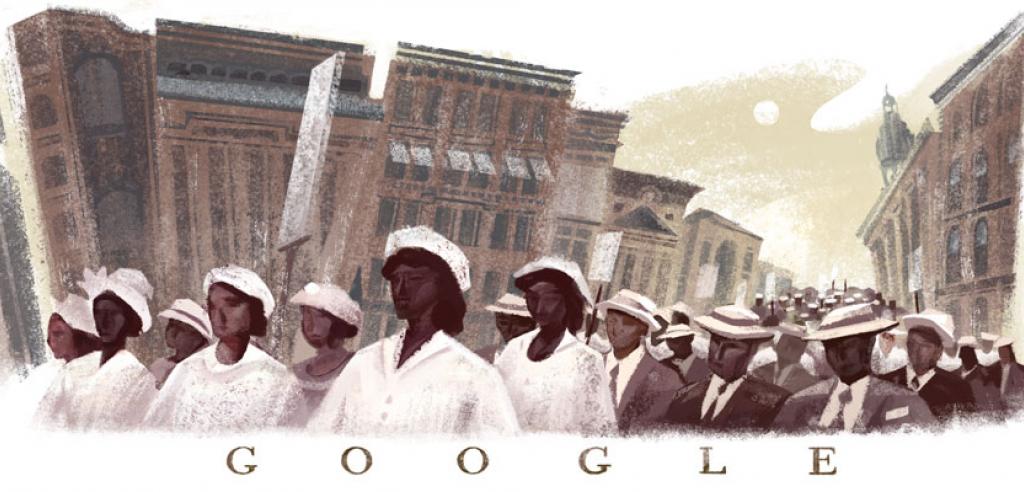On July 28, 1917, 10,000 African American men, women, and children marched in silence through the streets of New York City to protest lynching in America. In what is considered one of the first public demonstrations by African Americans in the 20th century, the NAACP mobilized thousands of members of the Black community in the “Negro Silent Protest Parade” down Fifth Avenue. On the 100th anniversary of the protest, Google featured the Silent Parade on its home page in recognition of the ongoing struggle for racial equality.
Formulated by James Weldon Johnson, the silent march was intended to be a public response and criticism of lynching and racial violence committed against African American communities in the United States. Earlier that summer, violence in East St. Louis killed many African Americans and savaged the Black community. Threatened by a growing African American labor force, a group of white men gathered in the downtown area of East St. Louis in May 1917 and began attacking and beating unsuspecting African Americans. In July, an armed white mob drove into Black residential areas and opened fire on men, women, and children; when Black residents shot back, a police officer was killed, which triggered more violence. Armed white mobs flooded the Black community, shooting Black residents as they fled, hanging Black people from street lamps, and burning Black homes and businesses to the ground.
The thousands of marchers in New York City also were spurred to action by the racial terror lynching of 17-year-old Jesse Washington, who was hanged, burned, and dismembered by a white mob in front of City Hall in Waco, Texas, on May 15, 1916.
The silent marchers communicated their frustration to the nation by holding signs and banners, without speaking one word. Children led the march wearing white, followed by prominent NAACP members like W.E.B Du Bois and a banner that read “Your Hands Are Full of Blood.” The American flag was carried as a reminder of the democratic ideals that failed to protect African Americans. The march launched the NAACP’s public campaign against lynching and racial violence.
EJI has documented more than 4000 racial terror lynchings of African Americans in the South and outside the South between the end of the Civil War and World War II. Lynching profoundly impacted race relations in this country and shaped the geographic, political, social, and economic conditions of African American in ways that are still evident today. Terror lynchings fueled the mass migration of millions of Black people from the South into urban ghettos in the North and West throughout the first half of the 20th century.
Most critically, lynching reinforced a legacy of racial inequality that has never been adequately addressed in America. EJI believes we cannot confront contemporary issues like mass incarceration and inequality unless we honestly confront the truth of our history of racial injustice.
